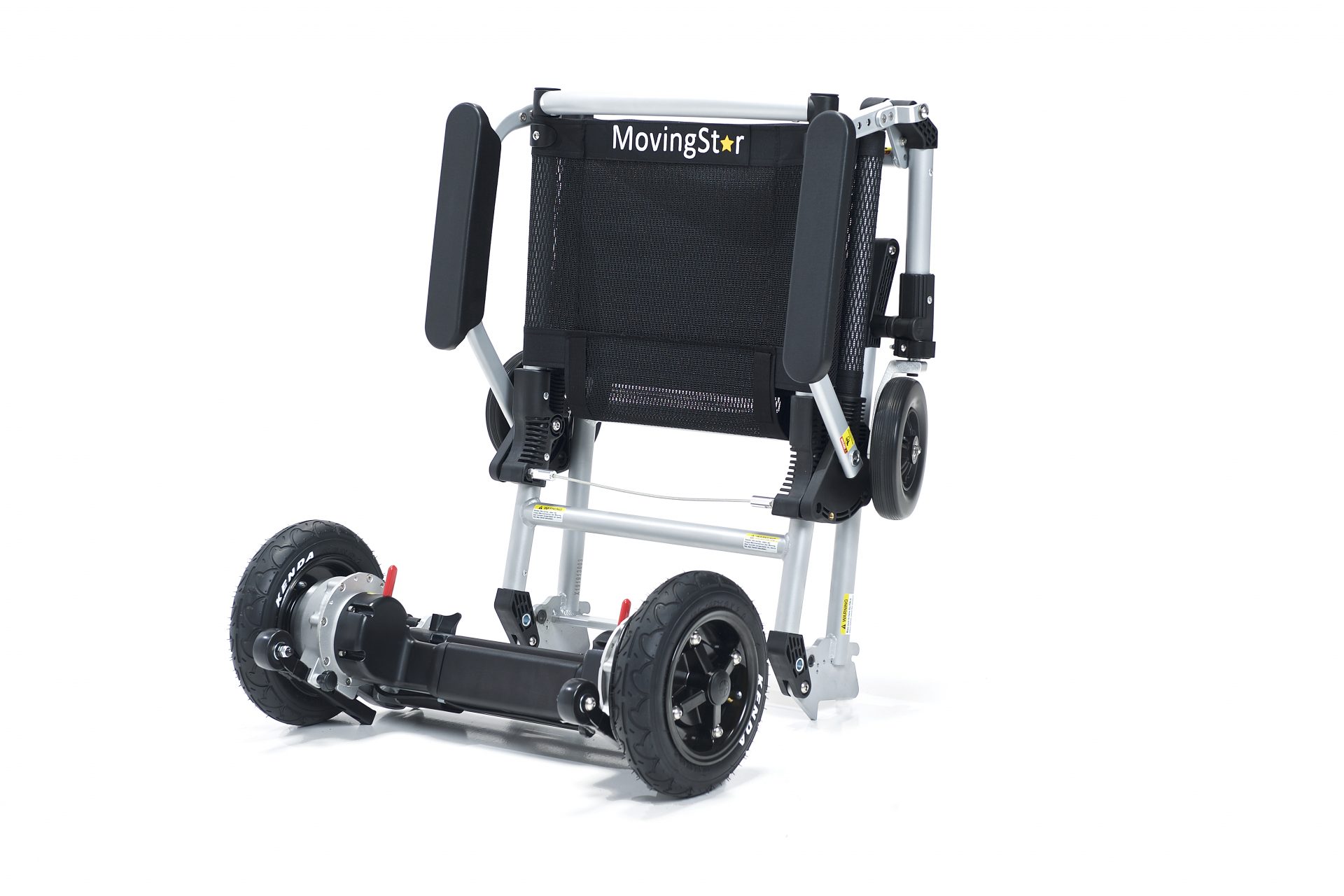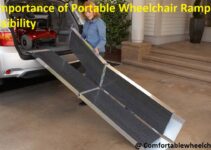Are you among the millions seeking comfort and convenience with a lightweight electric wheelchair? Look no further!
In this complete guide, we’ll explore all the advancements and applications of lightweight electric wheelchairs so you can make an informed decision.
Introduction of lightweight electric wheelchairs has extensively boosted independence and mobility of people who are unable to walk due to physical disabilities or age-related health problems. They offer an array of benefits that older models did not possess. This guide seeks to provide a thorough understanding about the advancements in lightweight electric wheelchairs, its applications and discuss how these advancements have profoundly contributed to changing the life quality of affected individuals significantly.

It is important to note that these wheelchairs are more sophisticated than manual-power assisted counterparts as they do not require an attendant for every time a user wants to move around. Their use expands far beyond medical rehabilitation settings, allowing them to be used in numerous activities such as attending social events and participating educational trips with family or friends. During the past decade, improvements in batteries, motors, lighter frame, frame strength and minimizing physical effort by users have brought the much needed breakthrough that has ushered in a new era of smart electric wheelchairs while remaining affordable at the same time.
This guide will also provide important safety considerations when using lightweight electric wheelchairs as well as highlight additional features which users can equip their chairs with depending on personal preferences such as multi-function control consoles, armrests type and choice of seating accessories etc. The scope covers both lightweight indoor chair variations for home use for elderly users who wish remain independent in their own activities within the house as well outdoor variations suitable for navigation on streets or other terrains including uneven roads, drives and paths through parks etc.
Definition of Lightweight Electric Wheelchairs
Lightweight electric wheelchairs offer more maneuverability and portability than traditional wheelchairs. Often referred to as power wheelchairs, lightweight electric wheelchairs are typically powered by an integrated electric motor. This motor provides the user with greater control over the movement of the chair, allowing them to move effortlessly in any direction they choose. Lightweight electric wheelchairs also provide better independent mobility than manual wheelchairs, often allowing users to access areas that may be difficult or impossible for people using a manual wheelchair.
In addition to increased maneuverability, lightweight electric wheelchairs are much easier to transport and store than their manual counterparts. Many power wheelchair models can be easily disassembled into component parts for storage and transport, making them perfect for those who want to take their chair on vacations or trips away from home. Most models of lightweight electric wheelchairs also feature adjustable seats height and backs, making them comfortable for users of any size.
Importance of Lightweight Electric Wheelchairs
Lightweight electric wheelchairs are becoming increasingly popular for people in need of extra mobility help. They offer both convenience and freedom, allowing users to be independent, travel further distances and get around in a variety of circumstances. Lightweight electric wheelchairs also provide considerably more power compared to manual wheelchairs, meaning that users don’t have to rely on the strength and endurance of their arms to travel distances, allowing them to enjoy leisurely activities such as outdoor trips and outdoor sports.
Lightweight electric wheelchairs have a range of advantages compared with traditional manual chairs. For example:
- They can travel further distances without becoming tired or out of breath; ideal for busy lifestyles or long trips away
- They are energy efficient; lightweight electric wheelchairs use less energy than manual wheelchairs
- More stable than manual chairs; increase ease of handling and maneuverability
- Increased control options over speed, brakes and seating position
- Comfort; the seat often lifts up or has adjustable widths making it comfortable while seated
- Lightweight electric wheelchairs can be better adapted with additional accessories such as mudguards, racks or arm rests
- Easier self propulsion than manual models; users don’t need a lot of upper body strength
- Most models fold for easy storage
Advancements in Lightweight Electric Wheelchairs
In recent years, the development of lightweight electric wheelchairs has allowed for easier transportation and installation of the equipment. This section will cover the advancements that have been made, their applications, and the benefits for users.
Advances in motor technology have enabled industrial grade motor-powered wheelchair types to achieve power output abilities that were previously beyond imagination. Motors are now able to safely deliver sufficiency of torque while minimizing weight and size, allowing users to move over various terrain with ease. High capacity lithium-ion batteries provide exceptional mobility range offering convenience and safety as they remain mostly free from maintenance worries such as memory effects or overheating.
Developments in steering systems have resulted in joystick control enabling different types of users to select a variant best suited for individual needs, including head tracking systems and voice recognition systems which are accessible via dedicated mobile applications. Users now benefit from improved braking while descending slopes or on otherwise uneven ground surfaces; thanks to unparalleled power transfer capabilities enabled by new traction motors that incorporate rotor speeds designed specifically for outdoor urban terrains. All these features provide better handling under varying conditions with independent control over each wheel’s orientation allowing superior fine-tuning and superior maneuverability allowing for better navigation in tight corners indoors or around obstacles outdoors
The shift towards increased connectivity via wireless interfaces offers extended user comfort when accessing information such as weather forecasts, providing improved access to public transportation routes; maps; and timetables. This makes everyday journeys more comfortable by providing a connected system enhanced with information sharing capability among endpoints allowing them to plan precise trips taking traffic delays into account together with safety advisories about potential hazards such as changes of speed limits or roadworks
Design improvements
Design improvements in lightweight electric wheelchairs have been one of the most significant advancements in recent years. This has made the chairs more comfortable and efficient for users, as well as easier for caregivers to maneuver.

Lightweight electric wheelchairs are generally available in both front- and rear-wheel drive models, each of which have their benefits and drawbacks. Common design enhancements include adjustable seat heights and adjustable seat back recline, enabling improved support and posture. Additionally, some models offer tilt/recline functions to help reduce pressure sores due to prolonged sitting, while others feature adjustable leg rest lengths and footplates to ensure a good fit while seated.
Other design features such as advanced ergonomics may reduce strain on caregivers’ postures when transferring a user from a chair or when providing daily living care. Some lightweight electric wheelchairs are also equipped with advanced electronics systems that can allow the wheelchair user additional control over their environment or the ability to travel farther safely.
Battery technology advancements
The primary source of the power for electric wheelchairs is a battery. Most electric wheelchairs are powered by either lead acid or nickel-cadmium batteries. Since their original development, major advancements have been made in battery technology that offer higher output and greater efficiency. Two of the most recent breakthroughs include lithium iron-phosphate (LiFePO4) and lithium titanate oxides (LTO) batteries which are being used to power electric wheelchairs in some regions of the world.
LiFePO4 is considered to be one of the safest type of Lithium-ion battery available. It has many advantages over older NiCd and lead acid versions, such as its low self-discharge rate and extended lifespan (lasting up to 10 years). LiFePO4 uses a phosphate based compound instead of pure Lithium, allowing it to produce 50% more energy density than traditional NiCd batteries while operating at a much lower core temperature. It also can provide deep cycle capabilities which reduces its likelihood to experience damage from excessive discharge or high peak currents.
The LTO battery offers an even greater advantage over other types due to its ability to produce higher discharge currents with relatively low internal impedance. Its lifespan far exceeds traditional batteries as it can be discharged up to 6,000 times without experiencing any noticeable decreases in capacity or output power making it ideal for wheelchair users who rely heavily on their device’s performance throughout the day. Additionally, LTO is a nonflammable material making it extremely safe to use compared with other materials such as Lithium cobalt oxide or Lithium Manganese Oxide which have been known to cause catastrophic events if they become overheated or otherwise damaged during use.
III. Key Features of Lightweight Electric Wheelchairs
Lightweight electric wheelchairs are a key advancement in personal mobility technology and offer numerous benefits to individuals with limited mobility and their caregivers. The most important feature of lightweight electric wheelchairs is their maneuverability and portability, due to their reduced weight. Lightweight electric wheelchairs may weigh as little as 35 pounds, compared with traditional electric wheelchair models that can weigh up to 160 pounds or more. Maneuverability is further enhanced by the compact size of the chair’s frame and other components.
In addition to improved maneuverability, many lightweight wheelchair models come equipped with a variety of advanced features designed for added safety and convenience. Many are outfitted with programmable hand controls that allow users to easily adjust speed settings or switch between power-assisted manual modes. Most also feature adjustable rear suspension systems to minimize vibration while traveling over rough terrain or ramps, as well as powerful motors that enable an impressive range of travel speeds up to 4 miles per hour.
The basket area beneath the seat on most lightweight wheelchair models can accommodate several items such as groceries or books, making it convenient for users who need help transporting items from place-to-place. Other features typically include adjustable armrests for added comfort during long trips, elevated headrests which help keep the user in the ideal upright position and footplates that help ensure secure footing when standing from the chair.
Weight capacity
Weight capacity is a major factor when choosing the right electric wheelchair for you. The right chair should have enough weight capacity to accommodate the user, their gear and any additional accessories. Many electric wheelchairs are designed to accommodate users ranging from 300-400 pounds in weight, although larger chairs are available that can hold as much as 500 pounds, depending on the model.
When selecting a wheelchair, you need to balance weight capacity with mobility and maneuverability. Weighing more means sacrificing some of the maneuverability of the chair in order to ensure it can handle your weight safely; though technological advancements have made these trade-offs less necessary than in earlier generations of electric wheelchairs. Look for features like an adjustable center of gravity and an adjustable or upgradable suspension system which allow you to customize your ride without compromising on safety.
Additionally, many chairs feature adjustable seat depths and widths to help ensure a proper fit, allowing you greater stability while using your electric wheelchair.
Battery life and range
The battery life and range of a wheelchair can be major factors in the choice of a lightweight electric wheelchair. Battery types vary depending on the model, but generally, lead-acid or lithium-ion chemistries are used.
Lead acid batteries are commonly used for long range and do not require a large contiguous space for installation since they come as two separate pieces. They are also relatively inexpensive when compared to lithium ion batteries, but need regular maintenance and usually have a shorter lifespan before needing to be replaced.
Lithium-ion batteries are more expensive than lead acid batteries but recharge faster and have a longer lifespan before needing replacement. They can also provide double the driving range compared to lead acid options due to their higher energy density. Furthermore, they generally take up less space because they are produced in one piece configurations that have an integrated charger system.
However, these models may require additional features such as temperature control systems that draw extra current from the battery during operation and reduce overall performance if not taken into consideration while making your selection.
Maneuverability
Lightweight electric wheelchairs have revolutionized the efficacy of independent mobility for disabled individuals; they offer an unprecedented level of maneuverability and adjustability. Many people choose electric wheelchairs due to the fact that they are considerably easier to drive than manual wheelchairs and can be operated with a joystick, control panel or in some cases even through a smartphone app.

When maneuvering, lightweight electric wheelchairs give users more freedom thanks to their quick acceleration and tight turning radius – allowing them to navigate through tight corners and narrow passages. They also provide agility and convenience, giving users more confidence when navigating in crowded areas or on uneven terrain. Additionally, with adjustable seat heights available on some models, users can ensure that their chair is properly aligned for optimal safety as well as stability when approaching obstacles or negotiating narrow pathways.
Apart from its superior maneuverability, a lightweight electric wheelchair offers many other advantages. They are relatively quiet during operation and typically produce only 50 decibels of sound which means they will not disrupt family members or stir up additinal noise in public places. Furthermore, depending on the model you select for your needs; most chairs have features such as foldable frames for easy transportation as well as plenty of legroom and ample seating space – both key factors which further contribute to increased comfort levels while driving. On top of all this, many models come with extended battery life making them great options if you’re looking to cover long distances without having to worry about charging too frequently.
Conclusion
In conclusion, lightweight electric wheelchairs have come a long way in providing a comfortable and safe form of transportation for individuals with physical disabilities. They offer a range of features that can make movement easier, such as improved maneuverability, adjustable seating, and customizable controls. In addition to the necessary components for maneuverability and security, these wheelchairs also provide an array of convenience features that make them ideal for daily use in both indoor and outdoor settings.
These wheelchairs are also becoming more affordable thanks to technological advances, making them a viable option for individuals who wish to enjoy the convenience of mobility without being weighed down by an older model or traditional wheelchair. As technology continues to improve, we are likely to see further advancements in the functionality and portability of lightweight electric wheelchairs.
FAQs
What is the new technology for wheelchairs?
Some of the new technologies for wheelchairs include smart wheelchairs, exoskeletons, and advanced power assist systems.
What is a lightweight electric wheelchair?
A lightweight electric wheelchair is a motorized wheelchair that is designed to be easily transportable and maneuverable, typically weighing less than 50 pounds.
What is the application of motorized wheelchair?
Motorized wheelchairs are used to assist individuals with mobility impairments in getting around, performing daily activities, and participating in various activities and events.
How was the electric wheelchair developed?
The electric wheelchair was developed in the 20th century as a way to assist veterans of World War II with mobility impairments. The first electric wheelchair was invented by George Klein in 1948.
What is the latest assistive technology?
The latest assistive technology includes smart home systems, wearable devices, telehealth systems, and advanced prosthetics.
What type of technology do smart wheelchairs make use of?
Smart wheelchairs make use of various technologies, including sensors, cameras, GPS, and artificial intelligence, to help users navigate their environment and perform daily activities more easily.
What type of technology is a wheelchair?
A wheelchair is a type of assistive technology that helps individuals with mobility impairments to move around and perform daily activities.
Is the electric wheelchair an innovation?
Yes, the electric wheelchair was a significant innovation in assistive technology, providing greater independence and mobility for individuals with disabilities.
What are the three main types of power wheelchairs?
The three main types of power wheelchairs are rear-wheel drive, front-wheel drive, and mid-wheel drive.
What are the three types of wheelchair propulsion systems?
The three types of wheelchair propulsion systems are manual (self-propelled), power-assisted, and fully powered (motorized).
See Also-
- Best walker wheelchair combo 2023
- Best transport wheelchair 2023
- Best reclining wheelchair 2023
- Best lightweight electric wheelchair 2023
- Best all terrain wheelchair 2023


